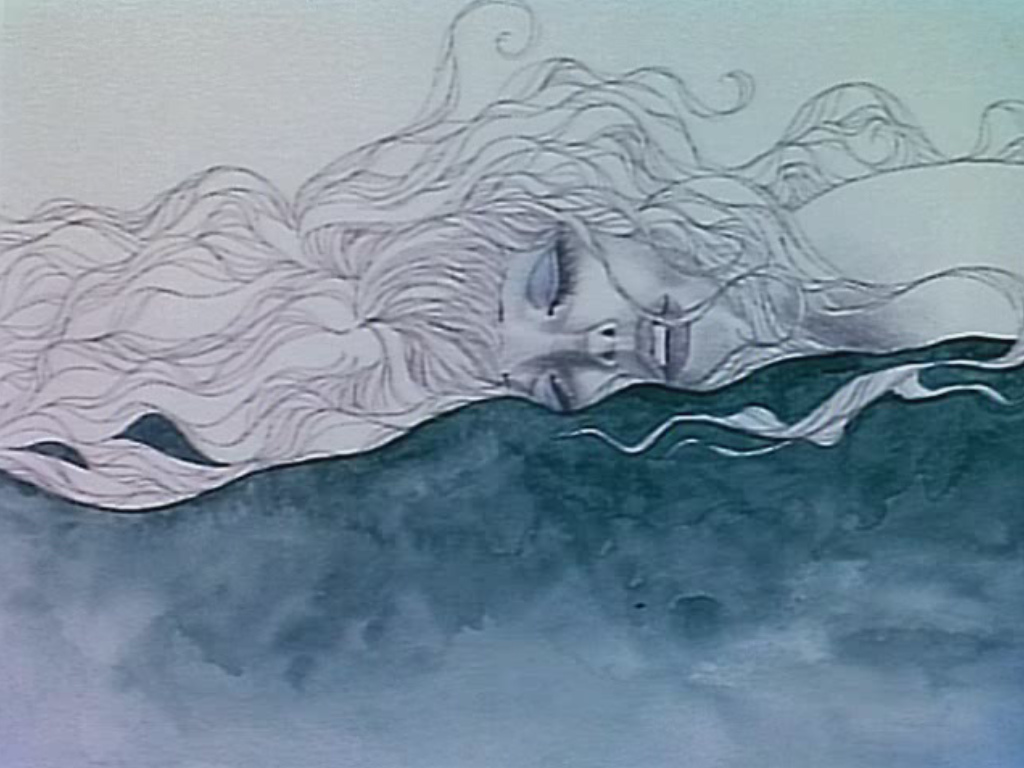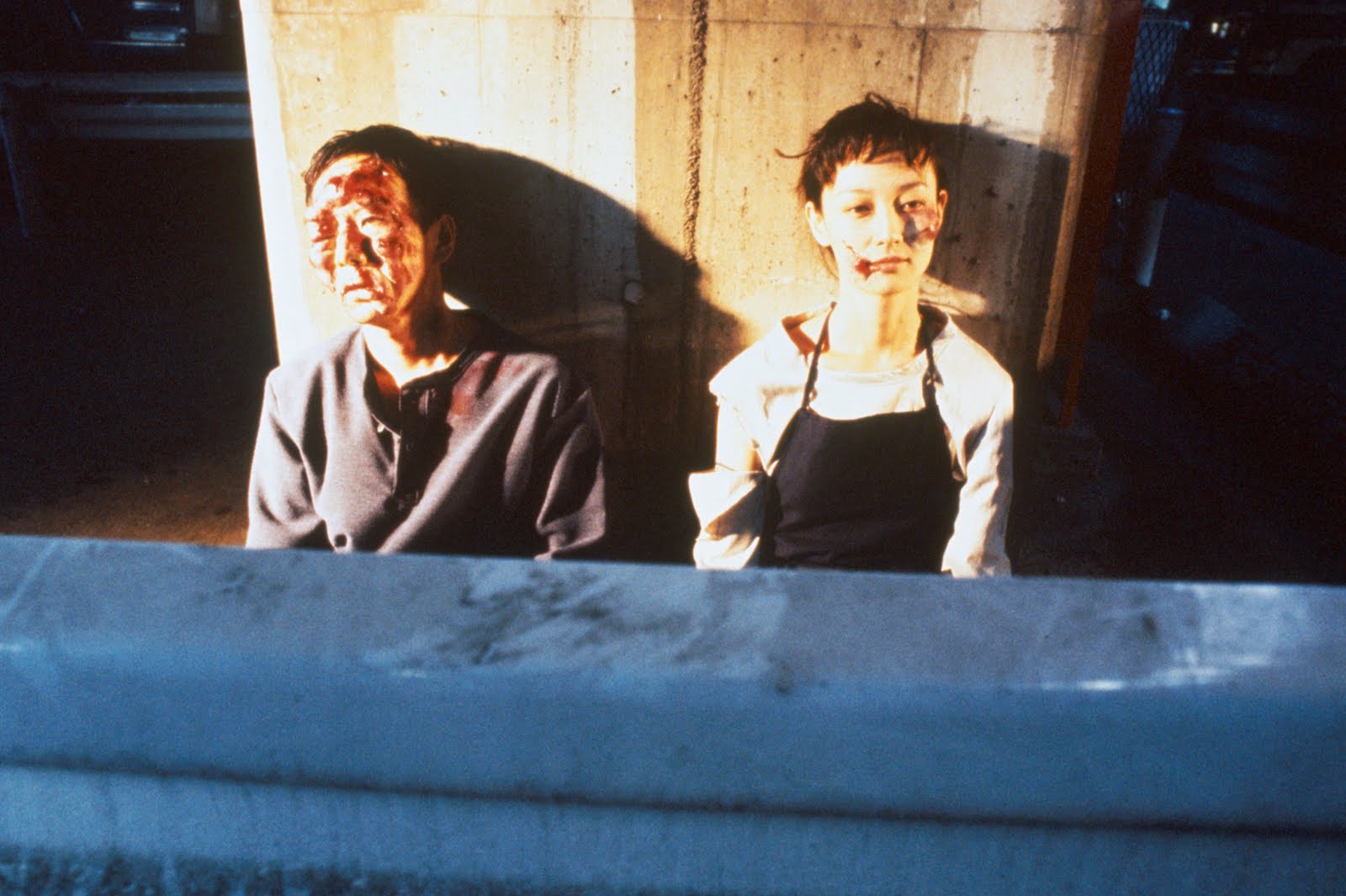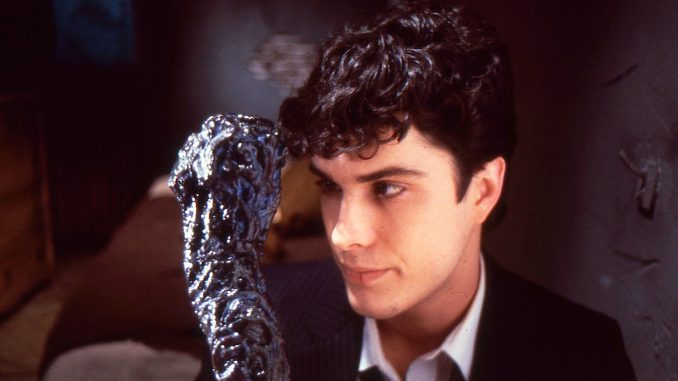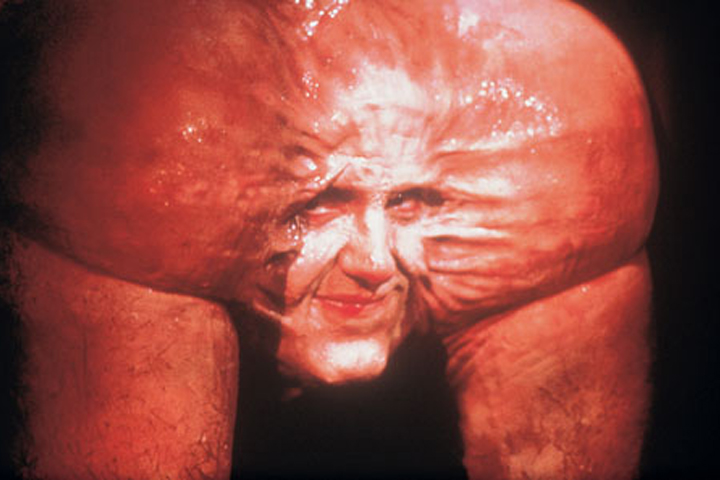6. Belladonna of Sadness (1973, Eiichi Yamamoto)

An early entry in Japanese animation and one inspired significantly more by the experimental French new-wave than anything found in anime. This adult fairytale features very little moving animation and mostly comprises still watercolour paintings, that’s not to say that Belladonna is any less visually stunning than full motion animation, only making the imagery here all the more striking.
A psychedelic head-trip of a movie with a mesmerising soundtrack by Masahiko Satoh, the film centres on Jeanne, a peasant wife to a farmer in Medieval France, who on her wedding night, is raped by the local Baron and later cast out by the Baron’s wife after accusing her of witchery.
In the woods to where Jeanne flees, she makes a pact with the devil (who increasingly appears more phallic as the film progresses, even to the point where he ‘enters’ Jeanne) and granted powers that assist her in gaining power and influence when she returns to the village after curing the local plague, and later to exact revenge on the Baron and his wife.
The visuals and story direction found in Belladonna are just as trippy and abstract as anything found in director Alejandro Jodorowsky’s praised work from the 70s, playing like a twisted rendition of Snow White with the once exiled maiden’s return to defeat the evil queen, only with more orgies, stake burnings and devil-worshipping than are found in the Disney one.
Unlike when Jodorowsky’s surrealist works instantly became midnight-movie sensations after being praised by influential figures such as John Lennon’s love for El Topo, Belladonna did not meet such a lucky fate where its commercial failure led to its production company, Mushi Prod., declaring bankruptcy after working on the film for six years.
Fortunately, Belladonna of Sadness received a much-deserved restoration and re-release in 2016, giving a new generation the chance to view this forgotten classic of one of the most experimental animes to ever be produced.
7. Tales from the Crypt presents: Demon Knight (1995, Ernest Dickerson)

Demon Knight has no right to being as enjoyable as it is for a feature-length spin-off of a TV show, but director Ernest Dickerson, who went on to direct the Snoop Dog-led horror Bones and numerous episodes of high-profile TV shows such as The Walking Dead, pulls off this feat by giving us this ridiculously entertaining horror with a tone akin to an R rated Gremlins.
Based on the HBO anthology series of the same name, Demon Knight stars William Sadler (known for the board-game playing Reaper in Bill & Ted’s Bogus Journey), a protector of a mystical key, who’s on the run from Billy Zane’s The Collector, a demon who, once in possession of the key, will bring demonic destruction to the universe.
Bringing together a surprisingly high-profile ensemble of actors (with Jada Pinkett Smith, Thomas Haden Church and The Shield’s C.C.H Pounder along for the ride) all game for these violent delights of battling demons, possessions and Billy Zane’s seductive prowess.
It is Zane who’s the MVP for Demon Knight, clearly having a blast in camping up the charming Collector by punching through people’s heads, spouting lines like “Fuck this cowboy shit, you fuckin’ hodunk, podunk, well then there motherfuckers” and tricking our protagonists with their deepest desires and fantasies (the highlight being Joe Dante regular, Dick Miller’s Hugh Hefner-living dream) that allows for an easy possession. It all adds up to Demon Knight being the R rated film that kids will adore, a time-capsule of 90s fun that sadly isn’t made anymore.
8. Tokyo Fist (1995, Shinya Tsukamoto)

At face value, Tokyo Fist appears to be a relatively grounded and conventional tale of a man fighting to win back the love of his alienated girlfriend by competing in the boxing ring against his love rival. For what transpires in the film, however, Fist plays it as anything but conventional or safe after it reveals itself in just the first few seconds to be just as deranged and disturbing as director Shinya Tsukamoto’s previous mad creation, Tetsuo: The Iron Man.
Tsukamoto’s visual style as director is an inspired cross between Takashi Miike and early Sam Raimi, making him one of the more daring and experimental cult directors and rightly deserving a place on this list.
A bonkers exploration of masculinity and bearing many thematic similarities to Fight Club, Tokyo Fist centres on three characters: Tsuda, a struggling salesman overwhelmed by his insecurities and his miserable existence; Hizuru, Tsuda’s unloved and emotionally neglected girlfriend and Kojima, a lean and mad eyed professional boxer and former high-school friend of Tsuda who disrupts the lives of both other characters when he wins over Hizuru, prompting Tsuda to take up a gruelling boxing training regime and eventually transforming his body into a weapon all leading up to a violent confrontation with Kojima.
On top of the close-quarters brutality where boxing matches play out like earth-shattering battles where faces are torn apart and bodies left broken, Hizuru’s story arc involves her becoming fascinated (in a perhaps fetishized way) with getting increasingly outrageous body modifications done to herself.
It’s that kind of film. Filmmaking so in your face it proves to be divisive as anything, but Tokyo Fist at least unarguably remains a hyper-stylised, ultraviolent, and gleefully depraved and entertaining cinematic experience from one of Japan’s most fascinating auteurs.
9. Brain Damage (1988, Frank Henenlotter)

A surface level allegory for drug addiction, Brain Damage nevertheless remains one of the masters of sleaze and schlock, Frank Henenlotter’s more deranged features, and this is coming from a filmography that includes sentient mutant genitals in Bad Biology and a re-animated prostitute in Frankenhooker.
An intelligent, devious, and well-spoken parasite, named Aylmer (voiced by 1950s television horror host John Zacherle), attaches itself to the stem of Brian’s brain, a character involved in a strange love triangle with his girlfriend and his brother, and doses him with a blue liquid secreted from itself giving Brian the feeling of pure euphoria, only for this sensation to be highly addictive. In return for more dosages of his mysterious fluid, Aylmer orders Brian to supply him with more and more brains to feed on, which in time turns Brian into an increasingly desperate junkie looking for his next fix.
Cheap and ugly to look at as is the case with all of Henelotter’s film, Brain Damage still carries a rough and perverse charm with it in the novelty of seeing a talking parasite with a cartoon-looking face chomp on brains of the unlucky. Easily the most talked about scene being the moment where Aylmer bursts through the back of the head of a woman going down on Brian, a moment that sets the tone for all of the director’s work.
It’s nasty and makes you feel in need of a shower after watching, but Brain Damage succeeds in its commitment to repeatedly gross you out in winking fashion and a true example of exploitation cinema.
10. Society (1989, Brian Yuzna)

When Society’s make-up effects artist, Screaming Mad George, is officially credited as the ‘surrealistic makeup designer’, tells you all you need to know for Brian Yuzna’s thinly-veiled satire on excess and class status. A film which builds on its escalating Invasion of the Body Snatchers/Stepford Wives-esque paranoia until it explodes in a mass of writhing flesh and slime.
Society tells the story of Bill (played by discount Michael J Fox, Billy Warlock), a wealthy and popular high-school student who feels out of place in the class he was born into and disconnected from his seemingly incestuous family. When people around him start dying under mysterious circumstances, Bill begins to uncover the conspiracy of a secret society of the upper class, which includes his family, that literally feast on the poor.
Yuzna’s film, with all its dated aspects from the 80s such as the mullet-sporting protagonist, the overuse of the cliché where characters are unable to deliver vital information to Bill until the moment where they meet an untimely doom, and the abundance of outlandish and often wooden acting, would prove fatal for most other films. But most other films don’t have the sort of third act pay-off like Society does. The numerous and unexplainable weird things happening around Bill lead to the grand guignol finale of the ‘shunting’, which if anything, is what this film is primarily known for.
Here, the rich members of society reveal themselves as the beings they truly are as they join together in an orgy of shape-shifting flesh and limbs, their bodies stretching and contorting, coated in KY jelly looking substances as they consume helpless victims. If seeing a man’s head emerge from his own arse or another being pulled inside-out is a selling-point for you, then “Society waits for you”.
Author Bio: Residing in Yorkshire, England, Matthew has been annoying people for years with his endless chatter about film and will continue to do so for many more years. His party trick is knowing the birth year of every movie star, considered a talent by some and a sign of insanity by others.